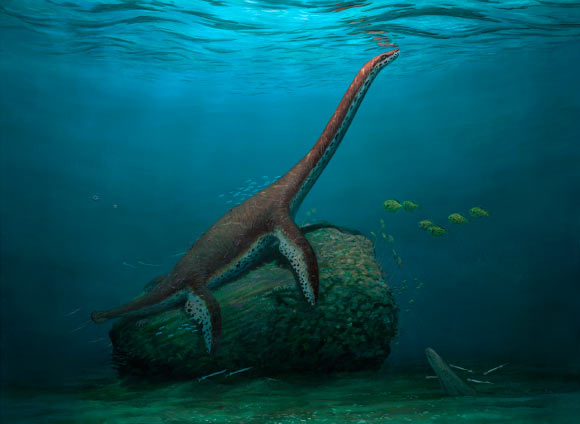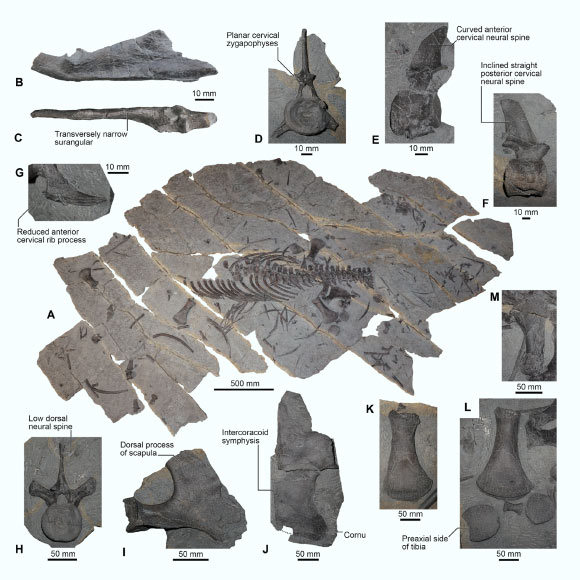Unveiling a Brand-New “Loch Ness Monster” in Germany
Have you ever heard of the Loch Ness Monster? This mythical creature has long been associated with the ancient marine reptile known as the Plesiosaur. Both share the distinctive feature of having a long and peculiar neck, along with an enormous elongated body. Recently, two newfound creatures resembling the Loch Ness Monster were unearthed in Germany[^1^]. These remarkable discoveries shed light on a previously unknown species of reptile.
Introducing Franconiasaurus brevispinus
According to Sci-News, the new species has been identified as Franconiasaurus brevispinus and belongs to an entirely new genus[^1^]. This revelation paves the way for greater understanding and exploration of the prehistoric reptilian world.

“Portrait” of the newly discovered creature – Photo: Joschua Knüppe[^1^]
Radiometric dating determined that these two exquisitely preserved three-dimensional skeletal remains are around 175 million years old, suggesting that they thrived during the Early Jurassic period[^1^]. The principal author of the study, TS Sven Sachs from the Naturkunde Bielefeld Museum, notes, “Over the course of more than 140 million years of evolution, the ancient marine reptiles dispersed worldwide, attaining significant diversity and occupying various ecological niches while undergoing multiple shifts in animal systems[^1^].”

Skeletal remains of the Jurassic creatures – Photo: Frontiers in Earth Science[^1^]
The Transition Phase and its Impact on Evolution
The transitional period between the Early and Middle Jurassic periods (175 to 171 million years ago) profoundly influenced all three major lineages of marine reptiles[^1^]. One of these lineages, the Rhomaleosauridae, went extinct approximately 161.5 million years ago, while the remaining two lineages flourished.
The Pliosauridae, a group of giant carnivorous predators, dominated the marine ecosystem from 171 to 90 million years ago[^1^]. On the other hand, the smaller Plesiosauroidea thrived in European waters before spreading globally, only to be eventually replaced by competing species during the Early Cretaceous period[^1^].
Returning to the recently discovered specimens, these creatures exemplify key characteristics shared by early Jurassic reptiles, providing insights into how subsequent lineages of marine reptiles evolved and adapted[^1^]. The newfound marine reptile combines features from the first-known plesiosaur species on Earth with later species, making it a remarkable representative of its time[^1^].
The unexpected discovery of these fossilized remains in an abandoned clay pit in the Jurensismergel formation near Mistelgau, Bavaria, is indeed a stroke of luck[^1^].
Business Today brings you the latest news and cutting-edge discoveries from the world of finance and economics. Stay informed with us at Business Today.
[^1^]: Original article retrieved from http://biztoday.us.
